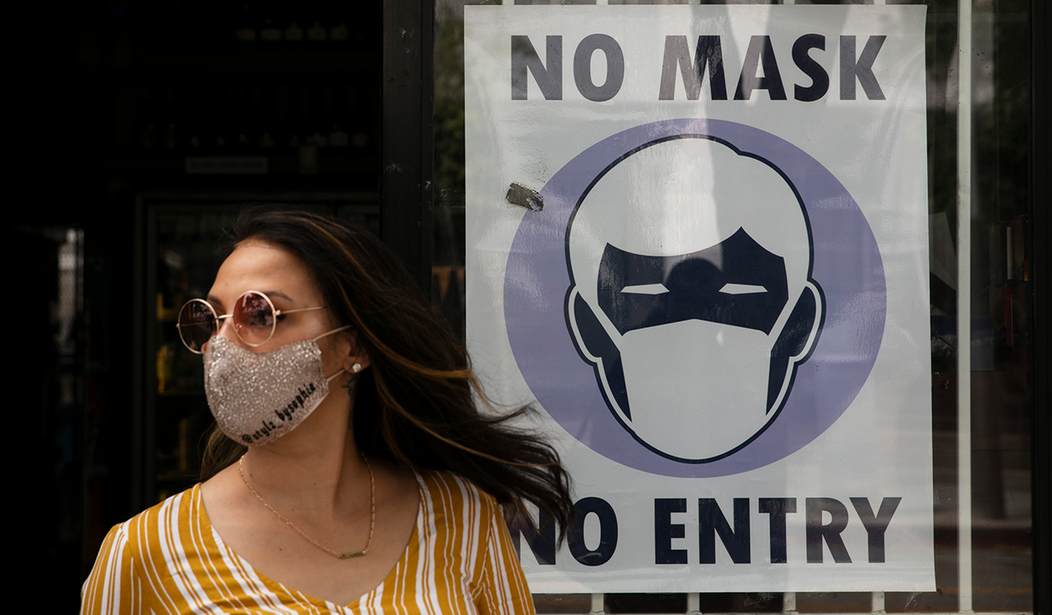Israel has risen to the top of the list of places we look to for information about the COVID-19 pandemic, and now the country has announced a hot, new trend: meet the “flurona” infection.
As the name implies, flurona is a double infection of both influenza and coronavirus. Yediot, Israel’s largest daily paper, reported on Thursday that a new mother had tested positive for both the seasonal flu and COVID. The woman was unvaccinated against either virus, was said to be feeling well, and was discharged later that day from Rabin Medical Center, where she had gone to give birth.
Prof. Arnon Vizhnitser, director of Rabin’s Gynecology Department, said the patient didn’t exhibit any severe symptoms. “She was diagnosed with the flu and coronavirus as soon as she arrived,” he reported. “Both tests came back positive, even after we checked again.” Vizhnitser added, “The disease is the same disease; they’re viral and cause difficulty breathing since both attack the upper respiratory tract.”
“Last year, we did not witness flu cases among pregnant or birthing women,” commented Vizhnitser. “Today, we are seeing cases of both coronavirus and the flu that are starting to rear their head.”
In fact, flu cases were rare last year. In April of 2021, Scientific American reported that the 2020–2021 season had seen historically low positivity rates for influenza.
Since the novel coronavirus began its global spread, influenza cases reported to the World Health Organization from the Northern and Southern Hemispheres have dropped to minute levels. The reason, epidemiologists think, is that the public health measures taken to keep the coronavirus from spreading—notably mask wearing and social distancing—also stop the flu.
Scientific American reported that the United States had seen only 700 influenza deaths that season, compared to 22,000 deaths the prior season and 34,000 deaths the season before that one. They included a chart that showed the positivity rate had dropped swiftly from a high of over 30% in the spring of 2020, when shutdowns began, to less than 1%, where it remained through 2021.
Throughout the COVID pandemic, many of us have been concerned that the extreme disease avoidance methods the left has normalized would become permanent. We feared mask-wearing and government pressure to limit socialization, similar to what is the norm in communist China and other far-East countries, would be here to stay. And we never doubted that, were COVID-19 to become too tame to justify the measures, the seasonal flu could easily be hyped enough to take its place, even though Americans have always weathered normal flu seasons without covering our faces.
But, as if on cue, the usual suspects are already proposing we continue taking the steps we took to halt the spread of COVID — which manifestly did not work, by the way — against the flu, going forward.
Related: Virginia Voters Denied Entry to Polling Place for Refusing to Mask (But No ID, No Problem)
Scientific American concludes their article with this thought:
Public health experts are grateful for the reprieve in cases. If the future includes more hand washing, face covering and temporary social distancing when people become sick, perhaps flu seasons can be less severe, even as health restrictions lift and groups gather together again.
The Huffington Post has been using COVID to push “masks forever” since at least 2020, in an article that paints East Asian mask-wearing in glowing terms:
Prior to COVID-19, if you didn’t use a face mask in public areas while sick or during the height of the flu season, you’d be at the receiving end of more than a few dirty looks, according to Judy Yuen-man Siu, an associate professor of social sciences at the Hong Kong Polytechnic University.
“If you behave against the social norms in Hong Kong by failing to wear a face mask in public areas, you would become a ‘deviant other,’ and thus you might receive dirty looks from the public,” she said.
Why did East Asians take to mask-wearing so readily?
Mask-wearing may have seamlessly blended into everyday life in East Asia because most of the countries have a collectivist bent, Sinha said. People generally prioritize the group over the self. Putting on a face covering when you’re sick or around vulnerable people is part and parcel of good citizenship.
Western societies tend to be more individualistic, stressing the desires of the individual over the needs of the group as a whole.
In other words, what we’ve been saying all along — that mask-wearing is a sign of obedience to the collectivist left and an easy, visual way to weed out and discriminate against those who prioritize individual liberty and won’t comply — is true. And while flurona may be a clever portmanteau to describe the condition of hosting both flu and ‘vid infections, it’s also a clever way to connect the two viruses in the public psyche. That will make the transition to masking up Americans forever go that much more smoothly.










Join the conversation as a VIP Member